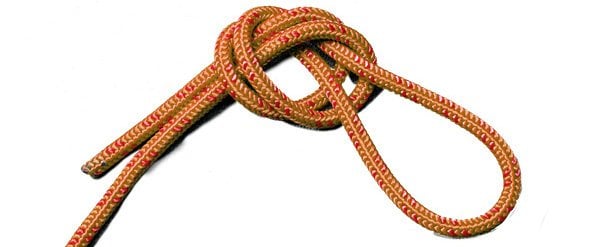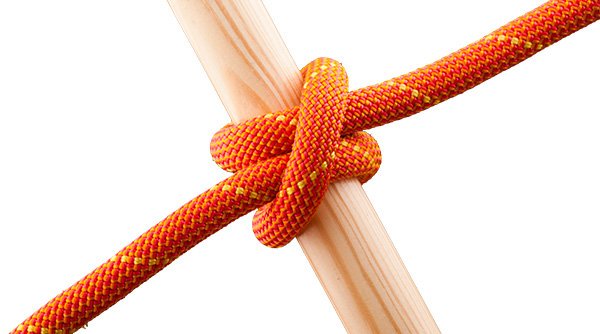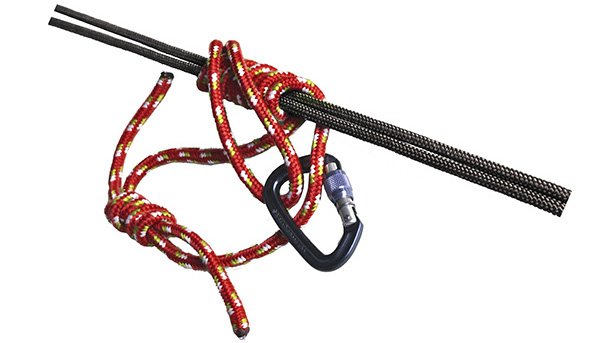Top 6 knots you need to know

TO MANY PEOPLE, the art of knot tying brings to mind wizened seafarers and adventurers from a bygone era. The likes of Clifford Ashley, born in 1881 in Massachusetts, USA, author of The Ashley Book of Knots published in 1944 – the product of an 11-year labour of love.
“To me the act of tying a knot is an adventure in unlimited space,” Ashley wrote. “If we move a single strand on a plane, interlacing it at will, actual objects of beauty and of utility can result… limited only by the scope of our own imagery and the length of the ropemaker’s coil.”
While Ashley’s encyclopedia of knot tying, which remains a classic to this day, describes more than 3800 knots of varying complexities and uses, you don’t need to be an enthusiast to make use of the practical benefits of knowing a few versatile knots.
“There are still people out there who know hundreds of knots, whose hobby is working with rope and cord, who write books about knots,” says says Glen Nash, Operations Director at the Australian School of Mountaineering (ASM). “But for most practical applications, five or six knots is really all you need.”
Overhand knot and loop

Most people will know this simple and fundamental knot, even if they don’t know it by name. The overhand knot is easy to tie – create a loop and push one end through – but can be difficult to untie after sustaining a heavy load.
According to Nash, the classic overhand knot dropped in popularity for a while, but has come back into fashion for its simplicity – for example, as a means of joining two ropes.
“The good thing about very simple knots is that you can check them visually from a distance or up close. You can see straight away if they’re tied correctly,” Nash says.
When tied using the end of the rope doubled over, the overhand knot can also create a secure loop that can be clipped to a carabiner.
Bowline

This ancient nautical knot is named after a rope used on old square-rigged ships. Forming a secure loop at the end of a rope that won’t slip under load, the bowline has in the past been used in the place of a harness – including, Nash says, by the original mountaineers.
Sailor and 2004 Australian Geographic Young Adventurer of the Year, Chris Bray says the bowline is his favourite knot. “I use the bowline a lot, sometimes in situations where if it failed, I’d be dead or at least in serious danger,” he says. “I trust it to hold me when I climb the mast, to hold up my sail, and to tie my yacht off in a storm.”
Being easy to untie when not under load is a key characteristic of a good knot, Nash points out. However, it can also mean such knots have the potential to shake loose when the rope is slack. To avoid this happening with a bowline, “always leave a descent tail on it,” says Bray.
“I didn’t once, tying the sheet ropes on deck during a violent storm off the NSW coast back in 2006, and it quickly pulled free,” he says. “You’ve no idea the beating that flailing sail dealt me while I clung, terrified, to the mast!”
Figure eight and rethreaded figure eight

Tie a figure-eight knot by passing the end of a rope over itself to form a loop, then continuing under and around the rope, and back through the loop – the result should resemble a figure eight, hence the name.
The ‘rethreaded figure-eight’ adds further versatility, and is a popular way for climbers to tie into their climbing ropes, Nash says. “Tie a figure-eight in the end of the rope, then pass it through a climbing harness, and follow it back through to complete the knot,” he explains.
Clove Hitch

This small but versatile knot consists of two reverse loops that form a self-tightening hitch, which can be clipped into a carabiner or used to secure a length of rope to a tree or a post. “Loop this simple, self-tightening knot around a bar or rail and you can pull on either end of the rope and she’ll stay,” explains Bray.
“Climbers will often use the clove hitch to link anchors together, so you can create a belay station,” adds Nash. “That’s just one of its uses.”
The Italian/Munter Hitch

“The Italian hitch is a pretty special knot,” says Nash. Also known as the Munter hitch, it works by using friction to control the rate of descent when threaded through a locking carabiner. It can be used as a belay system, for abseiling down a cliff face, or even lowering someone else down a cliff face (with a sling), in a rescue or emergency situation, for example.
While other equipment exists for these purposes, the right gear isn’t always at hand at the right time – which is when knowing a variety of knots comes in handy. “You can have just one piece of rope and lots of different knots for a multitude of applications,” says Nash. “It’s about being lightweight and compact, too.”
Prusik Hitch

Named after its inventor, Austrian Mountaineer Karl Prusik (1896-1961), Prusik hitches consist of a doubled length of rope – ends joined to form a loop using another knot, such as a double fisherman’s – wrapped around the climbing rope to form a barrel that can be slid up or down the rope. When loaded, Prusik hitches use friction to ‘grab’ the rope and lock in place, enabling a climber to ascend or descend a fixed rope, or used as part of a hauling system.
“The French Prusik pretty much is the king of all the Prusik knots,” says Nash of this derivative of the original Prusik hitch. The main distinguishing feature of the French Prusik is its capacity to be manipulated or moved under load if necessary.
Knot images: Shtterstock




